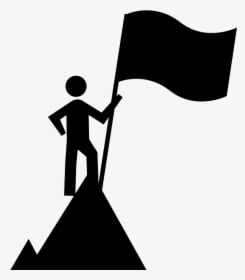Effective Communication: A Cornerstone of Successful Teamwork and Collaboration
Effective communication is paramount in achieving synergy and productivity within teams and collaborative endeavors. This article explores key principles and models applicable to enhancing communication effectiveness, emphasizing their practical application in real-world team settings. We will define key concepts to provide a foundation for understanding the discussed principles.
Key Concepts:
Active Listening: A communication technique involving fully concentrating on the speaker, understanding their message, responding thoughtfully, and remembering the communication. It involves both verbal and non-verbal cues demonstrating engagement and empathy.
Assertive Communication: Expressing one's needs and opinions respectfully and directly, without being aggressive or passive. It involves clear and concise language, active listening, and focusing on the issue rather than personal attacks.
Non-violent Communication (NVC): A method emphasizing empathy and understanding by focusing on needs, observations, feelings, and requests, reducing conflict and fostering connection.
Team Cohesion: The extent to which team members work together effectively and feel a sense of unity and shared purpose.
Building a Foundation for Effective Communication:
First, establishing clear communication is foundational. Utilizing a shared understanding of goals, tasks, and expectations – aligned with the principles of goal-setting theory – ensures all team members are working towards common objectives. This transparency promotes a shared vision and minimizes ambiguity, preventing misunderstandings and wasted effort. Furthermore, the adoption of active listening is crucial. By demonstrably paying attention to both the verbal and nonverbal cues of team members, leaders can foster empathy and understanding, leading to stronger relationships and improved collaboration. This is directly applicable to Tuckman's stages of group development, promoting a more cohesive team as members move beyond forming and storming and into norming and performing stages more efficiently.
Navigating Challenges and Fostering Trust:
Conflict is inevitable in any team dynamic. However, effective communication skills can mitigate these challenges. Employing assertive communication techniques enables the direct addressing of conflicts without resorting to aggression or passive-aggressiveness. By focusing on the issue at hand, and utilizing principles of non-violent communication (NVC), team members can express their needs and perspectives constructively, leading to mutually agreeable resolutions. This process strengthens team cohesion by reinforcing trust and open communication channels. Open and honest communication also contributes directly to building trust, a critical component of high-performing teams.
Optimizing Communication Strategies:
Effective communication necessitates adaptability and flexibility. Recognizing that individuals have diverse communication styles is essential. Leaders should adapt their approach, utilizing appropriate channels and styles to connect with different team members effectively. This involves leveraging various communication technologies—such as video conferencing, project management software, and instant messaging—to enhance efficiency and accessibility. Written communication requires particular care; ensuring clarity, conciseness, and proofreading are crucial steps to prevent misinterpretations and promote a shared understanding. Encouraging open dialogue through regular meetings and informal channels facilitates the free flow of ideas, fostering innovation and creativity. This practice directly contributes to building a stronger team through enhanced interaction and collaborative problem-solving. The incorporation of visual aids, such as charts and graphs, can also enhance comprehension, especially when dealing with complex information.
Addressing Cultural Nuances and Promoting Engagement:
In diverse teams, understanding and respecting cultural differences is crucial. Leaders must recognize that communication styles and norms vary across cultures, and adopting a culturally sensitive approach is key to fostering inclusivity and effective communication. Actively participating in meetings by sharing ideas and asking clarifying questions demonstrates engagement and promotes a collaborative atmosphere. Furthermore, celebrating team accomplishments together reinforces positive team dynamics and strengthens the collective sense of achievement.
Conclusion and Recommendations:
Effective communication is not merely a desirable attribute but a fundamental requirement for successful teamwork and collaboration. Applying the principles of active listening, assertive communication, and culturally sensitive approaches significantly enhances team dynamics and productivity. Organizations should invest in training programs focused on enhancing communication skills, emphasizing practical application within team settings. Further research could investigate the correlation between specific communication styles and team performance metrics across diverse organizational contexts. The implementation of these strategies will yield tangible improvements in team cohesion, conflict resolution, and overall project success. Continuous evaluation and refinement of communication strategies are vital to ensuring sustained effectiveness and adaptability within dynamic team environments.
Reader Pool:
Considering the discussed principles, how can organizations effectively measure and improve the communication effectiveness within their teams to maximize collaboration and productivity?



No comments yet. Be the first to share your thoughts!